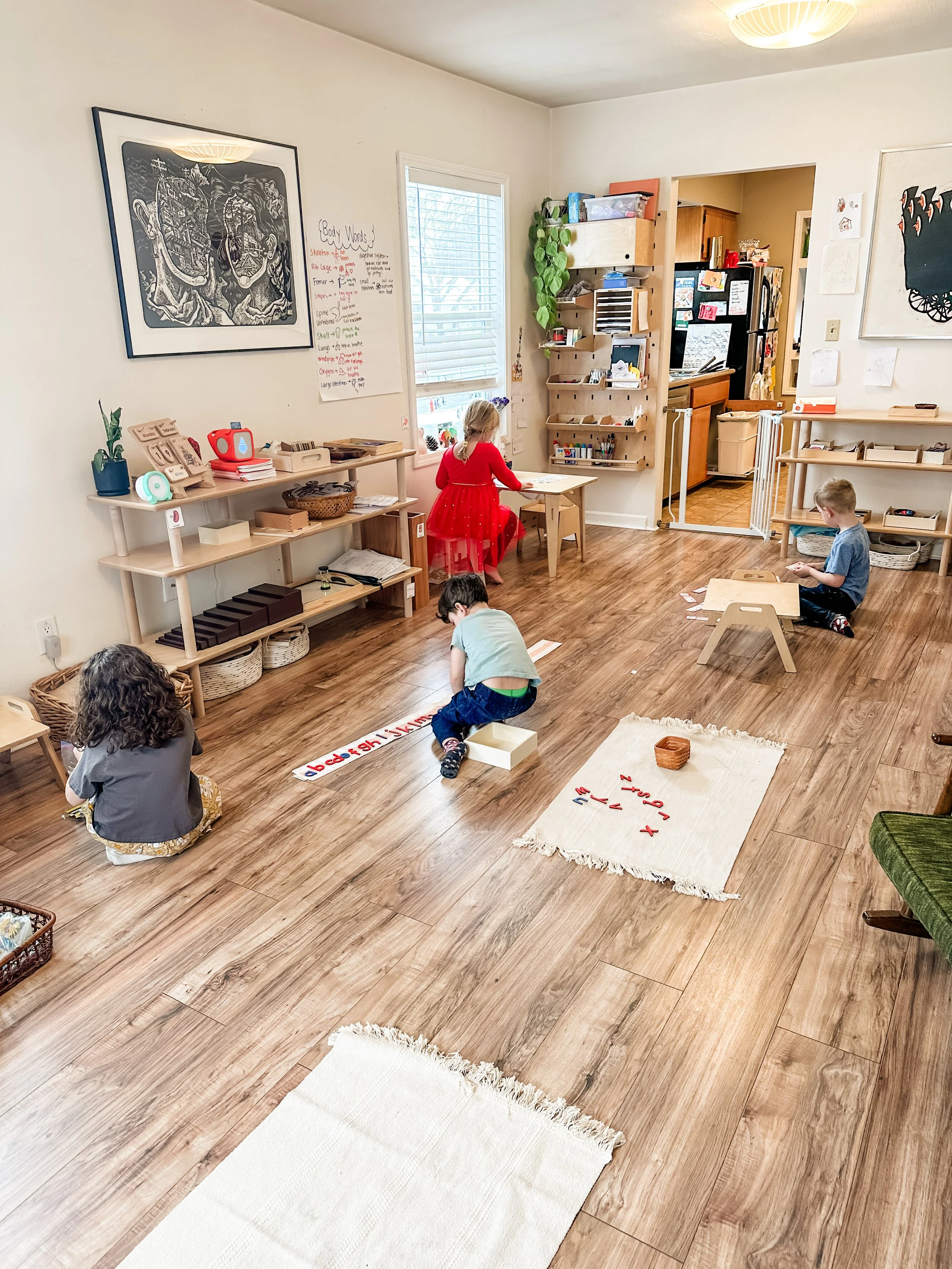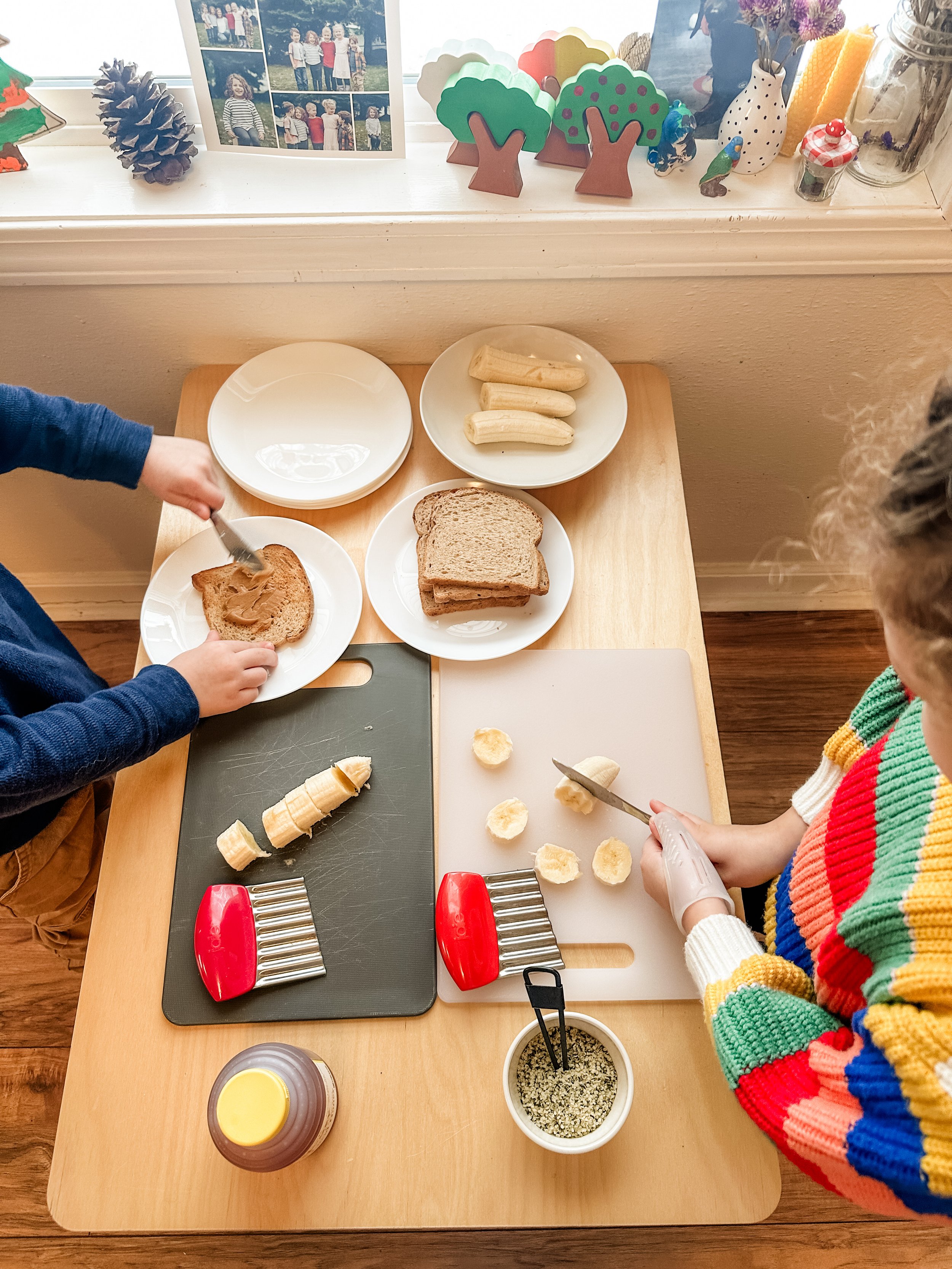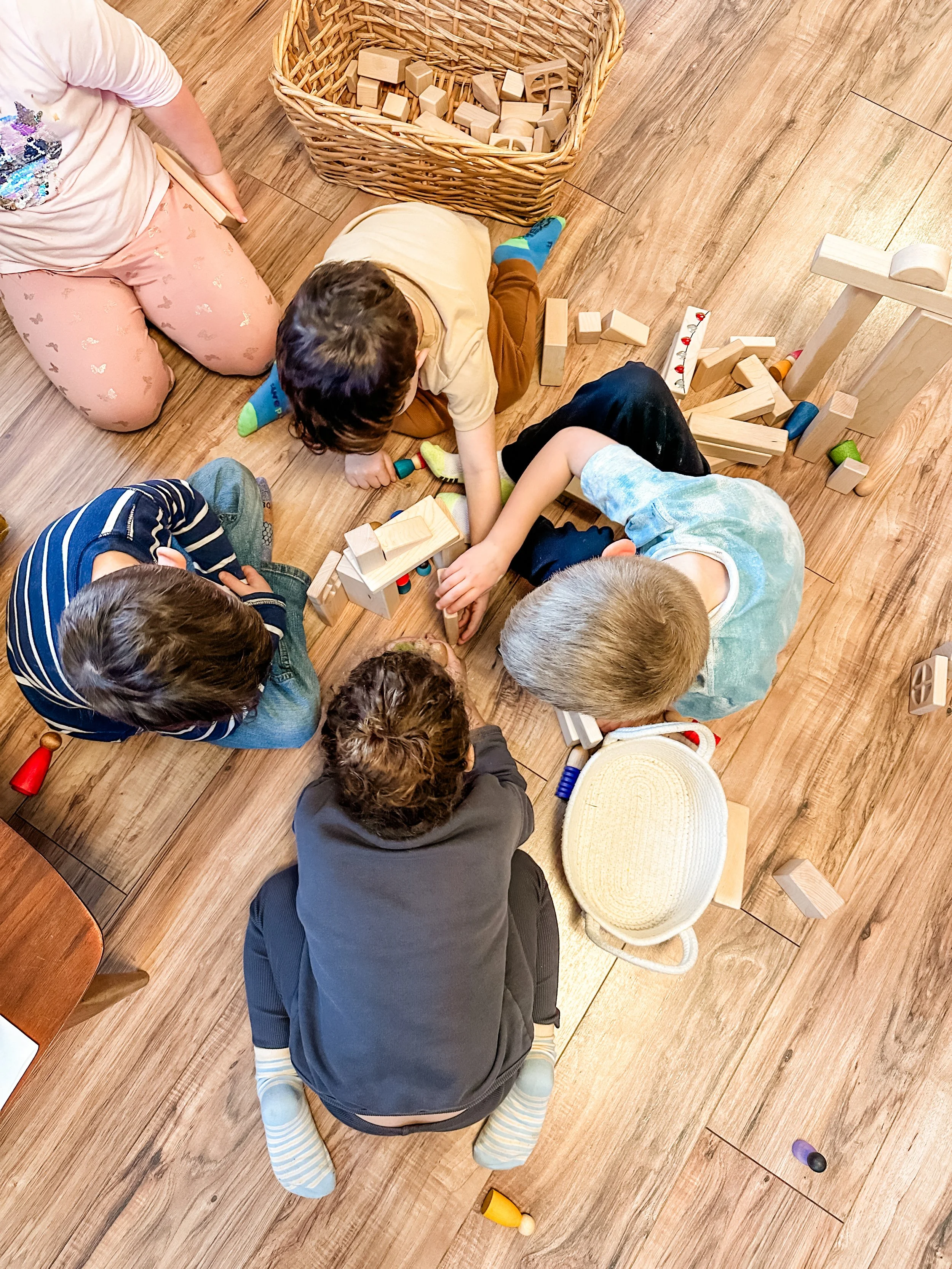FAQ: Daily Schedule
One of the MOST frequently asked questions I get, almost daily, is “what is your daily schedule”? Laying out a schedule is a few things:
Unique to your group size
Unique to your group needs
Unique to your group age
Unique to the length of your school day
Unique to how many days of school you do per week
Unique to your preferences
While all these factors come into play, I also know that sometimes just having a guide to start with when creating the schedule that works for you is ridiculously helpful! So, I am going to outline in detail our current schedule for the past two years.
My Current Schedule
The past two years I have been teaching microschool preschool out of my home with 5-6 students aged 2.5-5. We meet Monday-Thursday from 9am-12pm. During that time we incorporate academic content, foundational skills, practical life skills, social emotional learning, play time, snack, and project based learning. Our daily schedule is a mix of when their brain is most active and ready to learn, the flow throughout our space, when they need movement breaks, and through trial and error, what works best for the students. We started out with a completely different schedule our first week together, but after testing out new combinations, found the schedule that worked best for us!
8:55am- Student Arrival: I greet students and families, they hang up coats and backpacks, take off shoes, and get to have time to sit and chit chat with one another as they all arrive.
9:00am- Morning Meeting: During this time we greet one another, wake up our bodies, go over our plans for the day (especially if there is anything out of the ordinary), we check and graph the weather, sing songs, talk about how we are feeling, focus on a social emotional skill/topic, practice asking and answering questions, read a good book, etc. This is a non academic time that is focused on connection, building community and camaraderie, and setting the tone for the day. To find our favorite SEL printables, check out our bilingual feelings and mindfulness materials in our printables shop. And to find all our favorite SEL materials and books, check out our Amazon list.
9:15am- Group Learning Time: This is a time when I target specific learning skills as a whole group. We don’t cram in everything into this time, because I know I will have an opportunity to work with students individually as well later in our day, but during this time we may work on: phonological awareness routines, letter name, sound, and symbol fluency, number ID and quantity, phonics lessons from Raising Little Readers™, reading to build comprehension strategies, PBL direct instruction, handwriting practice, a no prep printable, etc. I often will grab a work off the shelf and we will complete it whole group, and I always integrate movement into my whole group learning time!
9:30am- Independent Work Time: This is the time where students get to self-select materials off of our shelves to complete independently. Our shelves consist of a math shelf, a phonics shelf, and a large mixed shelf that contains PBL unit specific materials, sensorial materials, fine motor work, etc. They also have access to a sensory bin, the art table, a light table, and/or an easel during this time. A rule that we have made for ourselves is we have to do at least one work from each shelf. As they work independently I am rotating through the space, taking a seat next to students to provide 1:1 instruction, observing and making note of mastery or areas they need support in, answering questions, mediating behavior, offering encouragement and praise, snapping a few photos, etc. During this time students self select their work space and whether or not they want a table or mat to work at. They move throughout the space selecting and returning their work materials, complementing one another, asking each other for help, choosing a book to read to me, dabbling in some art or car making, and more. This is a free flowing work time that allows students to practice and master the skills from our group learning time, and to take ownership of their learning. Also during this time we have soft music playing, we keep our voices low to respect our classmates, the bathroom and water are always available, and a visual timer is set to give them a heads up for how much time they have until work time is over. Looking for all the printables you see my students using daily? They can all be found in my printables shop!
10:30am- Snack Time: Snack is one of my favorite times of the day because they get to practice so many important practical life skills. When our timer goes off they clean up their work and put it away, roll and put away mats, set up tables for snack, and then line up to wash hands. After hand washing they get to prepare their own snack. During snack preparation they are learning how to sequence, how to be considerate of others and the ingredients available, and how to do simple skills like spreading, slicing, chopping, scooping and tweezing, transferring, etc. When they are finished making their snack, they select where to sit and enjoy their snack while chatting with their friends. As they finish their snack they clear their space, load their dishes in the dishwasher, sweep and wipe up their space, and wash their hands again.
Free Read: After they finish snack, then they transition to free reading. They select books from our basket that contains PBL read alouds, social emotional read alouds, fun read alouds, etc. They choose a book or two, find a good spot, and enjoy their book by themselves or with friends. This allows students to finish snack on their own time and not feel rushed to finish, or have to throw away snack because they didn’t finish “in time”.
11:00am- Outside Playtime: When the timer goes off again, snack tables get stacked, books put away, and they start to put on shoes, coats, etc. for our outside playtime! We head outside for a walk around the neighborhood and then freeplay outside. I don’t have a playground set, or a bunch of outside toys. Instead I have a large grassy area, a bunch of trees lining the perimeter, large rocks/boulders, sticks, pinecones, and other natural materials for them to pretend and make their own play. They can always be found in the trees, hardly ever playing in the grass even, exploring, climbing, jumping, making nature soup, and putting out gifts for our resident squirrel. When the weather is less wet, we do put out a mud kitchen, picnic table, water table, and a shelf of outdoor materials like chalk, bubbles, magnatiles for the garage door, ring toss, hammers and nails, magnifying glasses and binoculars, and random jars and containers for collections. Looking for excellent outside play materials? We’ve got them all saved here!
11:30am- Open Ended Playtime: If it is super nice outside, we will skip this and spend the rest of our day outside. But if it is chilly, rainy, or gloomy, then we will head inside after outside playtime to enjoy some open ended free play time. Under my shelves I have baskets full of items that they can use in a variety of ways to play independently or with one another. This is the time when we really lean into social skills like turn taking, sharing, manners, kindness, and inclusion. It is also a time when they really tap into their creativity, imagination, pretend play, etc. Some of the things they enjoy during this time are blocks, cars and roads, wooden peg dolls, loose parts, play silks, figurines, building STEM materials, magnetic wall, puzzles, and more. If you’re wanting to add to your open ended play collection, here are my students FAVORITES!
12:00pm- Clean up, Pack up, Dismissal: Our timer goes off for the last time and we clean up our play, gather any take home materials for the day, get a sticker, pack our backpacks, put on coats and shoes, and then greet our grown ups at the door and our day is done!
As you can see, our day has varying lengths of activities and work times, movement is always incorporated, and, especially at this age, the foundational skills socially, emotionally, and academically, are the focus. This schedule allows students to do the heavy lifting of any academic focused activities or learning when they’re fresh and ready for the day, and then breaks to refuel and then expel our next burst of energy through play!
Want to see our day in action? Make sure you’re following along on Instagram @projectbasedprimary where I share snippets of our days in stories and reels!







































